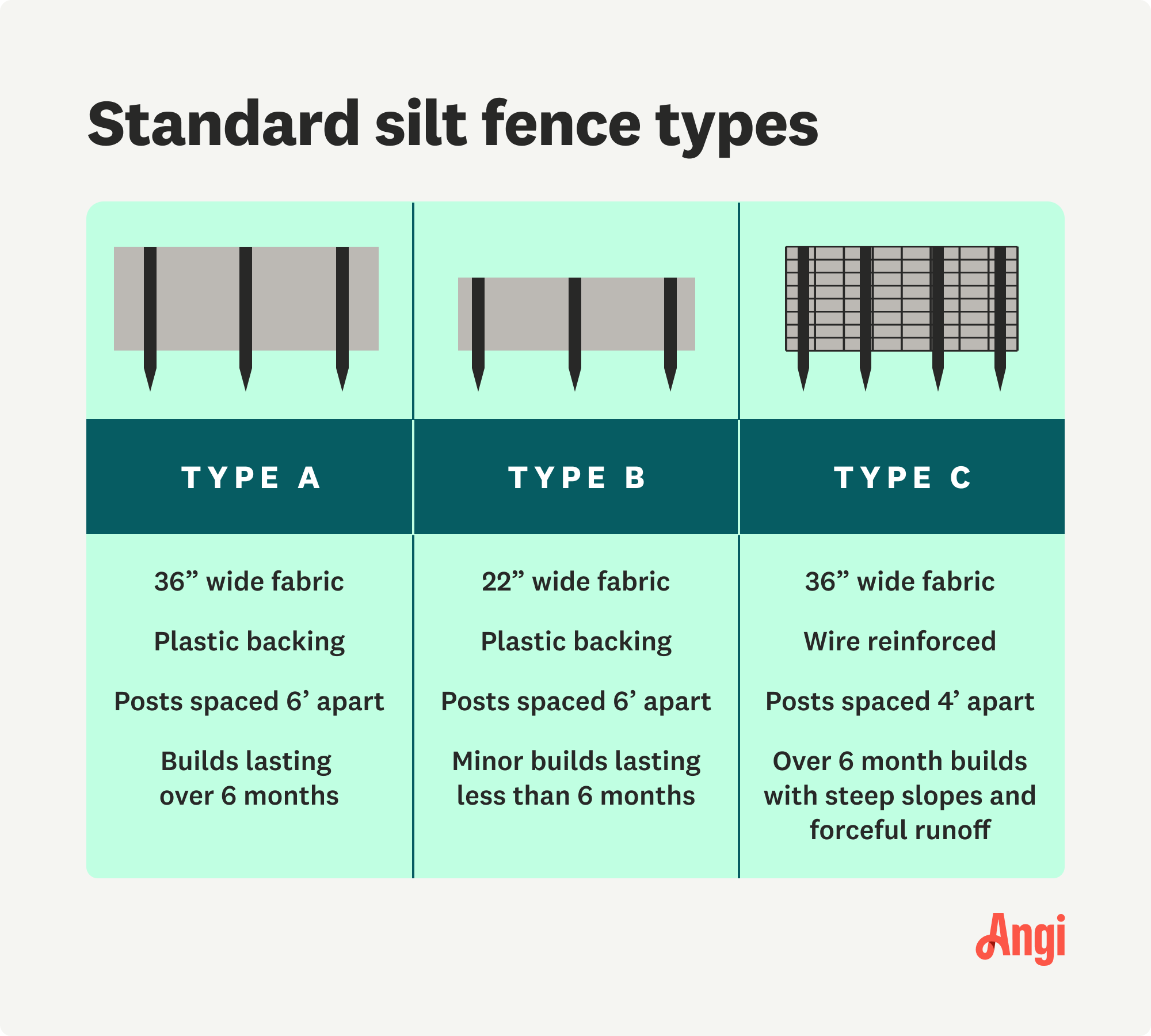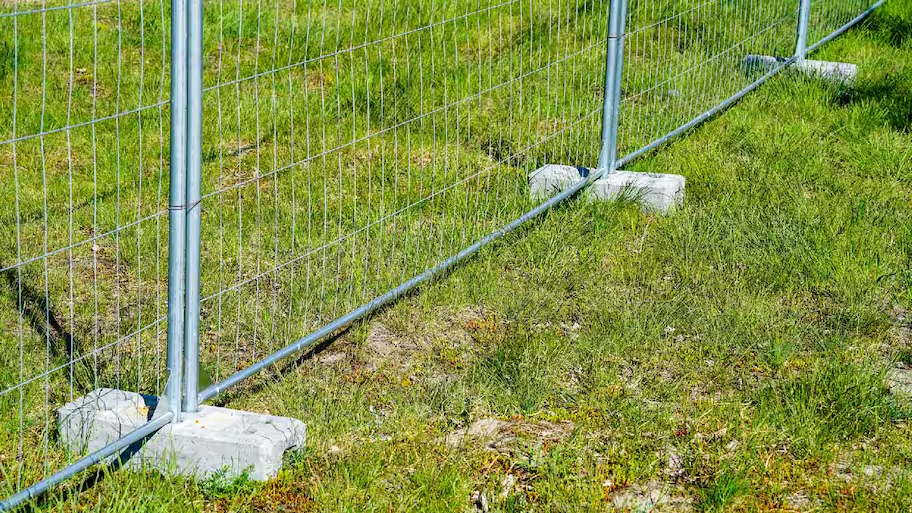
A corrugated metal fence is a great way to give your yard a sleek, modern look while also saving a little bit of green in the process. This guide will break down the costs of building this type of fence and what you should consider before doing so.
Silt fence installation costs between $415 and $2,075, with most homeowners paying $835. A pro’s quote will mainly depend on the size of the fence.


The average cost to install a silt fence ranges from $2 to $8 per linear foot.
If you live in a rainy region that is prone to muddy conditions, choose a heavy-duty, wire-backed fence.
Trenching takes 3x as long to install a silt fence using the static slicing method, which will cost more.
A pro’s quote will usually include the cost to remove the silt fence at the end of the project.
The average silt fence installation cost is $835, which is $5 per linear foot. Costs range from $2 to $8 per linear foot, depending on the type of material and installation process. Given that silt fencing is ripped down at the end of a new build home project, it might seem like an unnecessary expense. However, this legal necessity and environmental protection measure is typically rolled into your contractor costs to build a new home.
Silt fences vary in quality. If your build site won’t see much rain, is pretty clean, and construction is quick, you might be able to opt for a simpler, less durable plastic-backed silt fence. Heavier-duty, wide, wire-backed fence construction is a better investment for muddy sites in rainy regions with a long build time. Your contractor should advise you on what is best for your site.
| Silt Fence Type | Construction | Average Installation Cost |
|---|---|---|
| Type A | Medium durability | $3–$6 per linear foot |
| Type B | Low durability | $2–$4 per linear foot |
| Type C | High durability | $5–$8 per linear foot |
The size of your building lot affects silt fence installation costs. If you're designing a grand multi-bedroom family home with sizable grounds, you’ll need much more fencing than a compact one-bedroom tiny house. The average U.S. home sits on a lot that’s around 1/5 acre.
Below are some common lot sizes and average cost ranges.
| Lot Size | Perimeter Length | Average Cost |
|---|---|---|
| 1/5 acre | 167 linear feet | $334–$1,336 |
| 1/4 acre | 208 linear feet | $416–$1,664 |
| 1/2 acre | 415 linear feet | $830–$3,320 |
| 1 acre | 835 linear feet | $1,670–$6,680 |

Traditional silt fence trench installation involves digging a trench to bury the fabric and stakes into the ground sufficiently. A modern static slicing method, which uses a blade to cut into the soil, is becoming more common as the process inserts the fencing at the same time. Trenching requires almost triple the time it takes to install a silt fence using the static slicing method, according to the Environmental Protection Agency. This means trenching will invariably cost more.
Always ask your contractor what method they use and why. It will allow you to understand if reducing costs is an option.

To avoid pricing surprises, know that additional silt fencing costs can come up due to maintenance and removal, even after the initial installation.
Contractors need to inspect silt fences throughout the construction project. These temporary structures are only designed to last five to eight months, tops. They can easily get torn or sag, especially during downpours and other inclement weather. If the damage is minimal, you can repair by restaking or replacing the posts or removing silt buildup. Occasionally, the fabric may be ripped beyond repair, requiring replacement of some or all of the silt fencing.
Always ask your contractor whether they cover silt fence repairs or replacements as part of the project costs to plan your budget accordingly.
A contractor’s quote usually includes the cost of removing and disposing of silt fencing at the end of the project. You should still check this to avoid having to remove the silt fence yourself or pay an unexpected bill.
Unless you're a construction whiz, this isn't a temporary DIY fence idea to tackle yourself. It's a job best left to a general contractor or a specialty fence company near you.
While you can save money by installing a silt fence yourself, going the DIY route can make the project susceptible to damage and expensive mistakes. Improper installation means the fencing won’t prevent erosion effectively, or excessive amounts of sediment can enter the water system. You need specialty equipment for digging or slicing a trench and solid knowledge of complex silt fence installation regulations. Plus, you could damage the environment with contaminated stormwater runoff, anger your neighbors if your project is extra muddy, and end up with a hefty fine from the government department building inspectors for getting things wrong.
Home is the most important place on earth, which is why Angi has helped more than 150 million homeowners transform their houses into homes they adore. To help homeowners with their next project, Angi provides readers with the most accurate cost data and upholds strict editorial standards. We extensively research project costs to develop the pricing data you see, so you can make the best decisions for you and your home. We rely on reputable sources, including the U.S. Bureau of Labor Statistics, academic journals, market studies, and interviews with industry experts—all to ensure our prices reflect real-world projects.
Want to help us improve our cost data? Send us a recent project quote to [email protected]. Quotes and personal information will not be shared publicly.
From average costs to expert advice, get all the answers you need to get your job done.

A corrugated metal fence is a great way to give your yard a sleek, modern look while also saving a little bit of green in the process. This guide will break down the costs of building this type of fence and what you should consider before doing so.

Shadowbox fencing can boost your home’s appearance and privacy. Use this guide to learn how much it costs to install a shadowbox fence based on factors like material, length, and height.

Get a detailed breakdown of chain link fence repair costs, including average prices, cost factors, and tips to help homeowners budget for repairs.

If you need DIY temporary fence ideas, then you’ve come to the right place. We’ve researched several options providing semi-permanent fencing solutions for you.

Winter is a great time to install a fence as it can save you money and preserve your landscaping. Here’s everything you need to know about installing a fence in winter, plus tips for completing the project safely and efficiently.

There are enough types of metal fencing out there to make your head spin, so how to tell which is the best metal fence type for your property? Keep reading to find out.